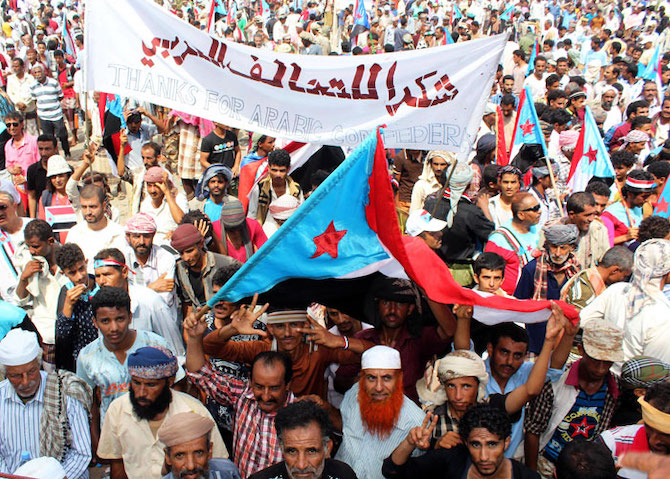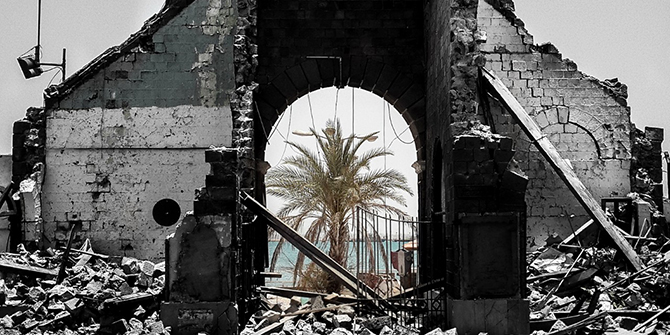by Fraz Naqvi

As the conflict in Yemen approaches its fifth year, the series of catastrophic events seems to intensify with each passing day. Divided between two parallel authorities – the Houthis in the north and Abdrabbuh Mansur Hadi’s government in the south – the country has been ravaged as both parties try desperately to subdue the other. The situation has been further complicated with the emergence of other parties with disparate ideologies, most notably al-Qaeda and the UAE-backed Southern Transition Council. Since the conflict has transformed itself from a civil to a proxy war through the intervention of foreign states, an immediate end to this disaster seems unlikely. The brunt, in any case, continues to be borne by the Yemeni population.
The Saudi bombardment of Yemen to quash the Houthi rebellion and counteract Iranian influence in the country has not only inflicted irreparable damage upon Yemen, but also left Saudi Arabia itself vulnerable to Houthis attacks. The 14 September 2019 attack on the Saudi Aramco Company, claimed by the Houthis, was by far the most damaging Saudi Arabia had ever suffered. Furthermore, the recent Houthi claim to have killed 500 Saudi troops, and arrested 2000 more, remains humiliating for the kingdom. This has also demonstrated the considerable military capabilities of the Houthi movement, previously dismissed by Saudi Arabia.
The magnitude of the attacks also signifies the Houthis’ desperation after five years of heavy fighting with no access to humanitarian aid due to the blockade. The attack shows that the Houthis have resolved to end the war by either available means: coercion or negotiation. After the Houthi Peace Plan was rebuffed by Saudi Arabia, the attack on Aramco may yet force the Saudi leadership to contemplate negotiations. The bargaining position of each side is shifting, as the Houthis gain more power while the Saudi coalition faces internal divisions, and is thus weakening.
The Southern separatist movement, otherwise known as the Southern Transition Council (STC), initially allied itself with Hadi’s government. However, the objective of each party varies significantly. The STC has long struggled for South Yemen to be independent of the central government, whereas Hadi seeks complete authority over the country in its entirety. Recently, the STC has conclusively broken with Hadi’s government and now controls Aden. With this, Hadi has now lost both capitals, Saana and Aden. Though negotiations between Hadi’s government, backed by Saudi Arabia, and the STC, supported by the UAE, are now ongoing, it is unlikely that the STC will give up its demand to rule over South Yemen as a separate state. Also, the extent of Saudi support to Hadi’s government is in doubt after the attack on Aramco and August’s killing and capture of hundreds of Saudi troops (though the numbers and nationality of the soldiers remain disputed).
Under such circumstances, a logical option would be the division of Yemen into two parts. This has historical precedent, as modern Yemen has only existed as a contiguous state from 1990 onwards. Before that Yemen had always been separated into North and South. The north first existed as a separate (modern) state under theocratic Zaidi rule, and then under an authoritarian Arab nationalist government in the second half of the twentieth century. The statehood of the south, however, remained dubious for two basic reasons.
The first lies in the demographic reality of the area. Though the south consists of roughly 70 percent of united Yemen’s territory, its sparse population meant it remained under the rule of tribal authorities, without any central power managing to establish control. Secondly, the arrival of the British in the late nineteenth century meant Southern Yemen became a British Protectorate until 1963. Hence the southern region did not undergo the experience of central rule. The transfer of political authority to the native population only occurred in 1967 after an armed struggle against British colonisation. Still, North Yemen continued to dominate, as it had more sophisticated political structures and a better economy to support its military.
Further evidence supporting the notion of dividing Yemen is the political dissensus shortly after unification in 1990. As the north, under the leadership of then President, Ali Abdullah Saleh, was keen to consolidate maximum power, the leaders from the south were unable to integrate themselves into the new state apparatus. This soon led to the declaration of a separate southern state in 1994. From then on, fighting between the government and the separatists only exacerbated the country’s deterioration. The Houthi revolt, aimed at securing their stake in the political arena, further escalated the situation. Thus, since its unification, Yemen has been unable to foster a pluralistic society, with differences prevailing over unified nationalism.
Partition, then, remains the only option which could guarantee peace and secure the interests of every actor involved in the conflict. Domestically, the Houthis cannot advance beyond the north as they would face vociferous opposition in the south due to sectarian tensions. Likewise, as the magnitude of Houthi power in North has increased, Hadi’s government is unlikely to be able to seize control there, and even in the event they regained the territory, the Houthi rebellion would persist. By granting Houthis control over Northern Yemen and leaving Southern Yemen to a coalition of Hadi’s government and the STC, not only would the prospect of peace be ensured but the fight against al-Qaeda would also be more effective.
Ideologically, the Houthis are opposed to extremist factions like al-Qaeda and ISIS. Similarly, due to its secular character, the STC is also averse to such dogmatic groups. Hadi’s government does includes some Islamist factions like the Islah Party, though any collaboration with al-Qaeda is highly improbable. Also, Hadi faces a delicate situation due to the absence of any effective capital as Saana and Aden are governed by the Houthis and the STC respectively. Partition, in this sense, is also vital to curb out extremism in Yemen.
Finally, the geostrategic environment also encourages Yemen’s partition. The resolution of Yemen’s conflict would provide an opportunity for rapprochement between Iran and Saudi Arabia, thus minimising regional instability. Also, as North Yemen would be endorsed by the international community as a separate state under Houthi rule, diplomatic contacts between Saudi Arabia and the Houthis could be initiated. This would have two positive outcomes. One is the protection of the Saudi border, and high-profile installations like airports and oil refineries, from Houthi attacks. The second is the permanent halt of Saudi airstrikes, which have killed thousands. Also, the blockade would be removed and international aid would soon follow. Thus, both domestically and regionally, the partition of Yemen could prove to be the key step towards peace in an otherwise volatile region.

Fraz Naqvi is an international relations graduate from Quaid i Azam University in Islamabad, Pakistan. His areas of interest include the Middle East, foreign policy and strategic studies. He frequently contributes to the op-ed section of various news websites. He currently works at the Institute of Strategic Studies, Islamabad. He can be reached at frazashhab@gmail.com







Very well written preciece and acurate. Do you think Biden will make a difference.